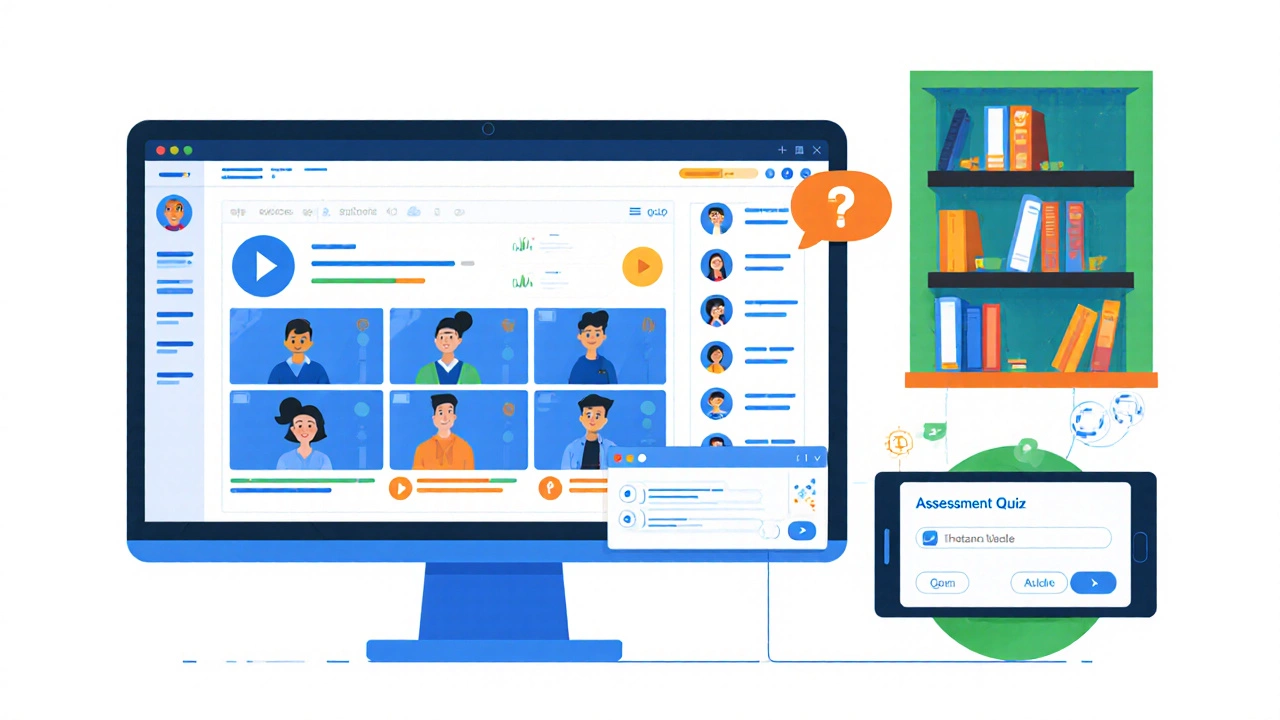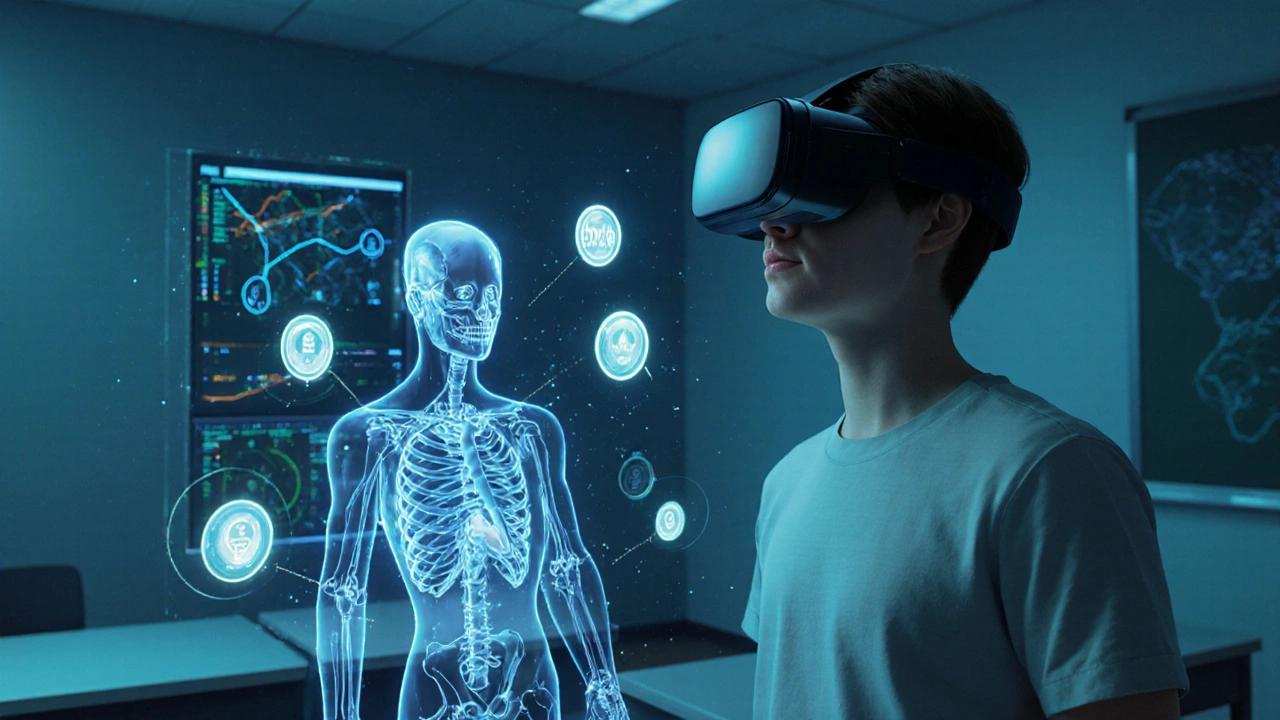Distance Education Knowledge Check
Distance Education Knowledge Check
Test your understanding of key concepts from the article
When you hear the term distance education, you probably picture a student watching lectures on a laptop, submitting assignments through a portal, and interacting with peers via a chat window. But what exactly does that term cover? This article breaks down the definition, traces its roots, explores the key components and delivery modes, and shows how it fits into today’s learning landscape. By the end you’ll know the exact meaning, the technology that makes it happen, and the factors to consider when picking a distance program.
Quick Summary
- Distance education is formal learning delivered when teacher and learner are separated by time or space.
- It includes asynchronous, synchronous, blended, and massive open online courses.
- Core technologies are learning management systems, video conferencing, and digital content libraries.
- Benefits: flexibility, wider access, cost savings; challenges: self‑discipline, digital divide, accreditation concerns.
- When choosing a program, check accreditation, tech support, interaction level, and credential value.
Formal Definition
Distance education is a mode of delivering instruction and learning experiences when the instructor and the learner are physically separated, using communication technologies to bridge time and space. In plain terms, any organized learning activity that doesn’t require the student to be in the same room as the teacher qualifies.
Historical Snapshot
The concept dates back to correspondence courses in the 19thcentury, where lessons were mailed on paper. The radio and television era in the mid‑20thcentury added audio‑visual broadcasts, but the real acceleration came with the internet. By the late 1990s, e‑learning refers to learning delivered via electronic media, primarily the web. Early platforms such as Blackboard and Moodle laid the groundwork for modern learning management systems.
Core Components that Make Distance Learning Possible
Several building blocks turn the abstract idea of teaching from afar into a concrete experience:
- Learning Management System (LMS) software that hosts course content, tracks progress, and manages assessments. Examples include Canvas, Moodle, and Google Classroom.
- Virtual classroom real‑time video conferencing tools that simulate a physical class, such as Zoom or Microsoft Teams.
- Digital libraries and open‑access repositories that supply readings, videos, and simulations.
- Assessment engines that automate quizzes, proctor exams, and provide instant feedback.

Delivery Modes Explained
Distance education isn’t a single format; it splits into several distinct approaches, each suited to different learning styles and schedules.
Asynchronous Learning
Students access pre‑recorded lectures, readings, and assignments at any time. Interaction happens through discussion boards, email, or timed quizzes. This mode is ideal for working professionals who need to study around a job.
Synchronous Learning
Classes meet in real time via a virtual classroom live video platform that supports chat, screen sharing, and breakout rooms. Learners experience immediate feedback and peer interaction, mimicking a traditional classroom vibe.
Blended (Hybrid) Learning
Combines on‑site sessions with online components. A student might attend a weekly lab in person while completing theory modules online. The hybrid model leverages the strengths of both worlds.
Massive Open Online Courses (MOOCs)
MOOC is a large‑scale, open‑access course offered online, often free or low‑cost, attracting thousands of learners worldwide. Platforms like Coursera, edX, and FutureLearn host MOOCs from leading universities, providing certificates that can be added to a résumé.
Benefits & Challenges
Understanding the pros and cons helps set realistic expectations.
Benefits
- Flexibility: Learn anytime, anywhere, which is a game‑changer for parents, caregivers, and remote workers.
- Broader access: Students in rural NewZealand can attend the same program as those in Auckland without relocating.
- Cost efficiency: No commuting, often lower tuition fees, and shared digital resources reduce overhead.
- Personalized pacing: Learners can replay videos, spend extra time on tough topics, or accelerate if they grasp concepts quickly.
Challenges
- Self‑discipline: Without a physical class schedule, time‑management skills become critical.
- Digital divide: Reliable broadband is still limited in some regions, affecting participation.
- Interaction quality: Building rapport through a screen can feel less natural; proactive communication is essential.
- Accreditation concerns: Not all providers hold recognized credentials; learners must verify accreditation official recognition by an education authority that validates the quality and transferability of a program.
Choosing the Right Distance Program
Before you enrol, run through this quick checklist:
- Confirm the institution’s accreditation status with a recognized body such as NZQA or an international agency.
- Identify the delivery mode that matches your schedule - asynchronous for max flexibility, synchronous for live interaction, blended for hands‑on work.
- Evaluate the LMS - is it intuitive? Does it support offline access?
- Check support services - technical help, tutoring, and career counseling are often included.
- Look at outcomes - graduation rates, employer partnerships, and alumni testimonials.

Future Trends Shaping Distance Education
Technology keeps pushing the boundaries:
- Artificial intelligence tutors: AI can provide instant feedback on essays, recommend resources, and adapt difficulty levels.
- Virtual and augmented reality: Immersive simulations let medical students practice surgeries or engineering students explore 3‑D models without leaving home.
- Micro‑credentialing: Short, stackable certificates that can be combined into a full degree, offering flexibility for lifelong learners.
- Data‑driven personalization: Learning analytics help institutions identify at‑risk students early and tailor interventions.
Distance Education vs. Traditional Classroom: A Quick Comparison
| Aspect | Distance Education | Traditional Classroom |
|---|---|---|
| Location | Anywhere with internet access | Physical campus or school building |
| Schedule | Flexible; often asynchronous | Fixed timetables |
| Interaction | Virtual forums, video calls, chat | In‑person discussion, labs |
| Cost | Typically lower tuition, no commuting | Higher tuition, transportation, facility fees |
| Assessment | Online quizzes, proctored exams, projects | Paper exams, in‑class tests, hands‑on labs |
Frequently Asked Questions
What is the difference between distance education and e‑learning?
Distance education describes the overall delivery model-any formal learning where teacher and learner are separated. E‑learning refers specifically to the use of electronic media (usually the internet) within that model. In other words, e‑learning is a subset of distance education.
Do distance‑learning degrees have the same accreditation as on‑campus degrees?
They can, but it depends on the institution. Look for programs that are accredited by recognized bodies such as NZQA, regional US accreditors, or European agencies. Accredited online programs carry the same weight as their on‑site counterparts.
Is a stable internet connection the only technical requirement?
A reliable connection is crucial, but you’ll also need a compatible device (laptop or tablet), a webcam for live sessions, and up‑to‑date browsers. Some courses recommend specific software like video‑editing tools or statistical packages.
Can I earn a full bachelor’s degree through distance education?
Yes. Many universities now offer fully online bachelor's programs in fields like Business, IT, and Health Sciences. Verify that the program is accredited and check any residency requirements, as a few may ask for a short on‑campus component.
How do I stay motivated when studying remotely?
Create a dedicated study space, set a weekly schedule, break tasks into small chunks, and use the LMS’s calendar alerts. Join student forums or virtual study groups to keep the social element alive.





